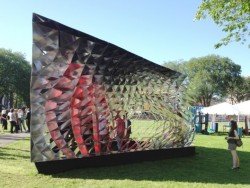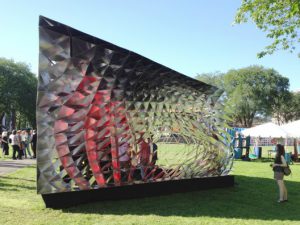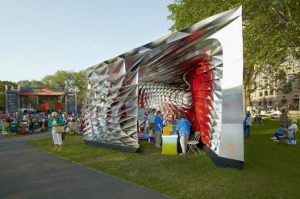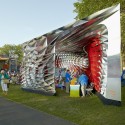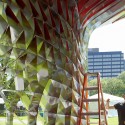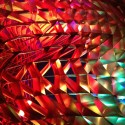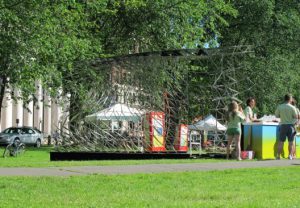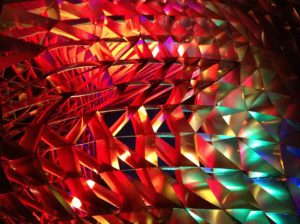“We treated the tenets of digital fabrication as basic assumptions – our ability to efficiently produce variable and unique components and the cultural implications of moving beyond standardized manufacturing. But, we were less concerned with the uniqueness of the objects we created than on the novel types of tectonic expression they allowed.”The Festival Pavilion was designed and built by Yale School of Architecture students.
Month: December 2012
Mach 3 bubble shock waves
We have another featured video from last week’s Division of Fluid Dynamics Meeting in San Diego, CA.
The video below shows what happens when a Mach 3 shockwave slams into a helium bubble. Researchers needed a supercomputer cluster to simulate the phenomenon, revealing how density and vorticity (more on that after the jump) evolve during the process.
Simulations in the video focus on two key physical qualities: density and vorticity. Density, as you’re probably aware, is simply the amount of mass per unit of volume. In the video, the high density regions are orange whereas the low density areas are blue.
Vorticity, however, is not quite as simple. Vorticity represents how a fluid is rotating at a specific point, and it has similarities to angular momentum. Vorticity has both a magnitude (or length) and a direction.
In the video, the researchers show the strength (magnitude) of vorticity at the various points, but not its direction. If they showed the direction at each point, there’d be a ton of tiny arrows pointing in a variety of directions.
With the aid of these simulations, researchers can learn the complex dynamics behind the shockwave’s propagation. But what’s the point of looking at these shockwaves, aside from making awesome videos?
One technique cited in the video, shockwave lithotripsy, could benefit from this research. For this medical procedure, doctors direct shockwaves to shatter kidney or bladder stones into many smaller pieces. Now that’s my kind of treatment.


